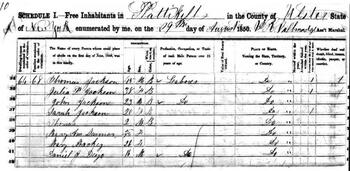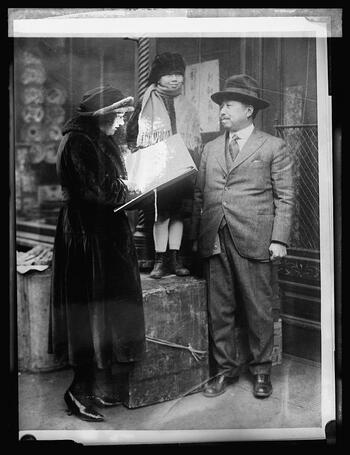After 1840, census data became more detailed. Beginning with the 1850 Census, marshals were no longer responsible for tabulating data from the returns they collected: the data was sent on to a central office in Washington for their classification, compilation and publication. Between 1850 and 1930, determination of a respondent’s race became a prominent feature of census questions. In 1850, there were two questionnaires, one for free inhabitants and one for slaves. The racial classification of “mulatto” was added to the column “Color” (not Race), and in 1870, classifications of “Chinese” and “American Indian” were added to the “Color” question. This was also the year that included questions about parents of the respondent (foreign born or not) and if the person was a male citizen of the United States over the age of 21.
The Fourteenth Amendment to the U.S. Constitution, ratified in 1868, shortly after the U.S. Civil War, guaranteed not only “equal protection under the law” but it also guaranteed “equal representation.” Section 2 of the Amendment changed the way in which formerly enslaved people were counted. The “three fifths” rule under slavery was abolished and from that point on, all people (excluding Native Americans not taxed) living in each of the States were to be counted equally.
In 1890, at the height of the “Jim Crow” era, the “Color” question was changed to “Race,” and terms “quadroon” and “octoroon” were also added as a means of trying to identify and enforce segregation of people of any degree of any color. These last classifications were dropped the following year, replaced with the category “Mulatto” for the 1910 and 1920 Census. At the time, other racial categories were added, including “Mexican” (1930 Census only) and five categories for people from South or East Asia. In all situations, where a person reported White and some other lineage, they were to be recorded as the other race.
Since that time, the number of racial categories has increased and remains a controversial but still important question, because which demographics get which resources relies on the accuracy of this question. It was not until 1960 that people could select their own race. Prior to that, an individual’s race was determined by census takers, known as enumerators. And it was not until 2000 that Americans could choose more than one race to describe themselves.
1850 Census Schedule for “free” black inhabitants in Hudson Valley. Image provided by Historic Huguenot Street, Newpaltz, NY on New York Heritage.
Census taking (ca. 1920). Source: Library of Congress.

